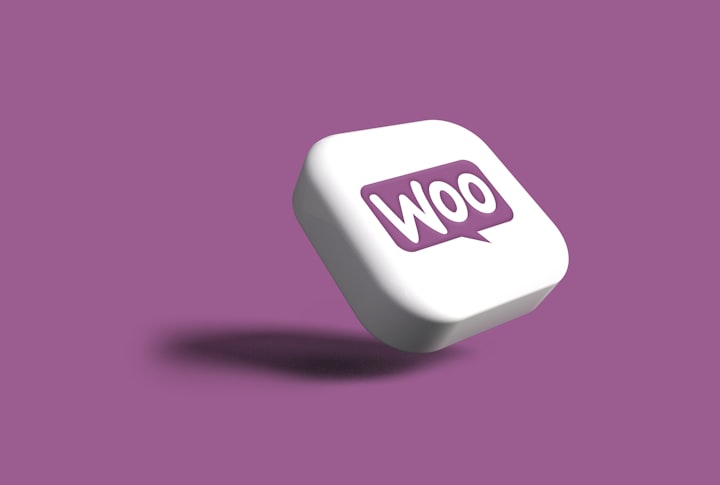How to Add a Blog to Your Existing WooCommerce Website
Seamlessly Integrating a WordPress Blog with Your WooCommerce Store

Adding a blog to your WooCommerce store is a great way to drive more traffic, establish yourself as an authority, and ultimately boost conversions. In this comprehensive guide, we’ll walk through everything you need to know to seamlessly integrate a WordPress blog with your existing WooCommerce website.
Why Add a Blog to Your WooCommerce Store?
Here are some of the key benefits of having a blog on your ecommerce store:
- Increased Website Traffic: Publishing high-quality blog content attracts organic traffic from search engines. The more content you have, the more chances for people to find your site.
- Higher Conversion Rates: Blog content helps build trust and establishes your credibility. This makes visitors more likely to make a purchase.
- Additional Sales Channel: Your blog creates opportunities to recommend and link to products on your store.
- Improved SEO: A blog with fresh, relevant content will improve your search engine rankings and visibility.
- Enhanced Brand Awareness: Publishing blog posts consistently builds brand recognition and loyalty with readers.
- Deeper Customer Engagement: Quality blog content keeps customers coming back and interacting with your brand.
- New Customer Acquisition: Blog content expands your reach by introducing new readers to your brand and products.
Hence, an integrated blog expands your marketing strategy beyond just your store. It helps drive more qualified traffic, convert readers into paying customers, and build lasting relationships.
How to Add a Blog to Your Existing WooCommerce Website
If you already have a WooCommerce website set up, integrating a WordPress blog is straightforward. Here are the key steps involved:
Install WordPress Alongside WooCommerce
Your first step is to install WordPress in a subdirectory on your existing WooCommerce store domain. This will allow you to run both WooCommerce and WordPress from the same domain.
To do this:
- Create a new subdirectory on your server, for example, yourdomain.com/blog
- Install WordPress into this new subdirectory
- Update the WordPress configuration to reflect the new URL path
- Install the WooCommerce WordPress integration plugin
This will keep your existing WooCommerce storefront untouched while allowing you to build a blog on the new WordPress install.
Connect the Two Platforms
Now you’ll need to connect your WooCommerce store data with WordPress. This allows sharing of products and transaction data between the platforms.
Install the WooCommerce WordPress integration plugin on both sites. This will create a bridge between your store and blog databases.
From the WordPress side, you can now:
- Display WooCommerce products in blog posts
- Show related products on blog posts
- Access order data for reporting
And from the WooCommerce side, you can:
- Display blog posts on your store
- Sync customers between platforms
The plugin provides a seamless integration without complex coding.
Design Your WooCommerce Blog
With WordPress installed and connected to your shop, it’s time to design your blog.
Start by choosing a WordPress theme that fits your brand style and provides the functionality you need. Look for themes with:
- Responsive design
- WooCommerce integration
- Blog layout options
- Customization settings
Some top themes to consider include Storefront, Hello Elementor, Astra, and GeneratePress.
Next, add any essential plugins like security and performance tools. Useful ones include Yoast SEO, Google Analytics, Akismet spam protection, and Smush image optimization.
Finally, customize your theme design including:
- Colors
- Fonts
- Layout
- Widgets
- Menus
Ensure your blog design is consistent with your existing WooCommerce store for a streamlined experience.
Populate Your Blog with Content
Now the fun part - filling your blog with engaging content!
Start by planning the topics and categories you will cover. Align these closely with your products and brand.
Potential ideas include:
- Industry news and trends
- “How to” product guides
- Spotlights on specific products
- Client use cases and testimonials
- Your company culture and team
- Behid-the-scenes business insights
- Curated lists and roundups
Ideally aim to publish 2-3 blog posts per week. Vary the format between long posts, short posts, listicles, and more.
Leverage different content types like text, images, infographics, videos, and interviews.
Promote your blog content through your existing marketing channels, social media, and email lists. This will notify your current audience about the new blog.
Analyze Performance and Optimize
Track your blog traffic, engagement, and conversions over time. Pay attention to which topics perform best.
Use these insights to fine-tune your blog strategy. You may decide to:
- Focus on specific high-performing topics
- Increase/decrease blog post frequency
- Test different content formats
- Improve SEO with better keywords
- Promote top posts more aggressively
Blogging takes regular analysis and optimization to maximize results. Leverage analytics tools like Google Analytics to spot trends and make data-driven decisions.
Putting It All Together
Adding a blog to your existing WooCommerce store takes careful planning but is extremely rewarding. Follow these steps for seamless implementation:
- Install WordPress alongside your shop
- Connect the two platforms via the plugin
- Choose a theme and customize the design
- Populate your blog with engaging content
- Promote your posts through key channels
- Track performance and optimize over time
With an integrated blog, you can reap the benefits of increased traffic, higher conversions, improved SEO, and more. The synergy between blogging and ecommerce creates new opportunities to grow your brand and connect with customers. If you need help setting up your WooCommerce blog, consider leveraging a WooCommerce development service to ensure it's implemented smoothly.
About the Creator
Miles Brown
I'm Miles Brown, a Programming & Technology professional with expertise in using various technologies for software & web development @Positiwise Software Pvt Ltd, a leading technology solution for Software Development & IT Outsourcing.






Comments
There are no comments for this story
Be the first to respond and start the conversation.